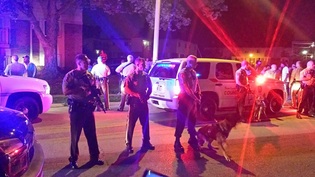
Eapen Thampy/Wikimedia Commons
Police protect the scene of the shooting of Michael Brown in Ferguson, Missouri, August 9, 2014.
View full image
Between 2015 and early 2020, police in the United States shot and killed 5,367 people. A disproportionate number of them were people of color—a reality that, according to researchers from Yale and the University of Pennsylvania, constitutes a public health emergency in the affected communities.
Examining available information from a Washington Post database, researchers determined that victims identified as Black, indigenous, or people of color (BIPOC) were killed up to three times as often as whites. The numbers held whether or not victims were armed.
Moreover, BIPOC are more likely to be killed at a younger age than whites, robbing them, their families, and communities of collective productivity. “Communities that have experienced fatal police shootings report worse mental health for months after,” says report coauthor Dowin Boatright ’17MHS, assistant professor of emergency medicine. The report was published in the Journal of Epidemiology and Community Health.
These racial disparities have persisted despite increased use of police body cameras and closer scrutiny of police behaviors. Many police departments nationwide remain heavily militarized, and only 16 states currently require de-escalation training.
Analyzing the causes of the statistics was not the authors’ primary focus. But coauthor Emmanuella Asabor ’24MD/PhD points to certain policies, such as New York City’s “stop and frisk” practices, known to affect BIPOC disproportionately. “The nation’s traumatic racial past,” she says, “has led to the very different ways that police function in Black and brown neighborhoods” versus white neighborhoods. Health professionals, say Boatright and Asabor, can help: they can frame police violence against BIPOC such that it can be addressed as a major public health concern.
 loading
loading